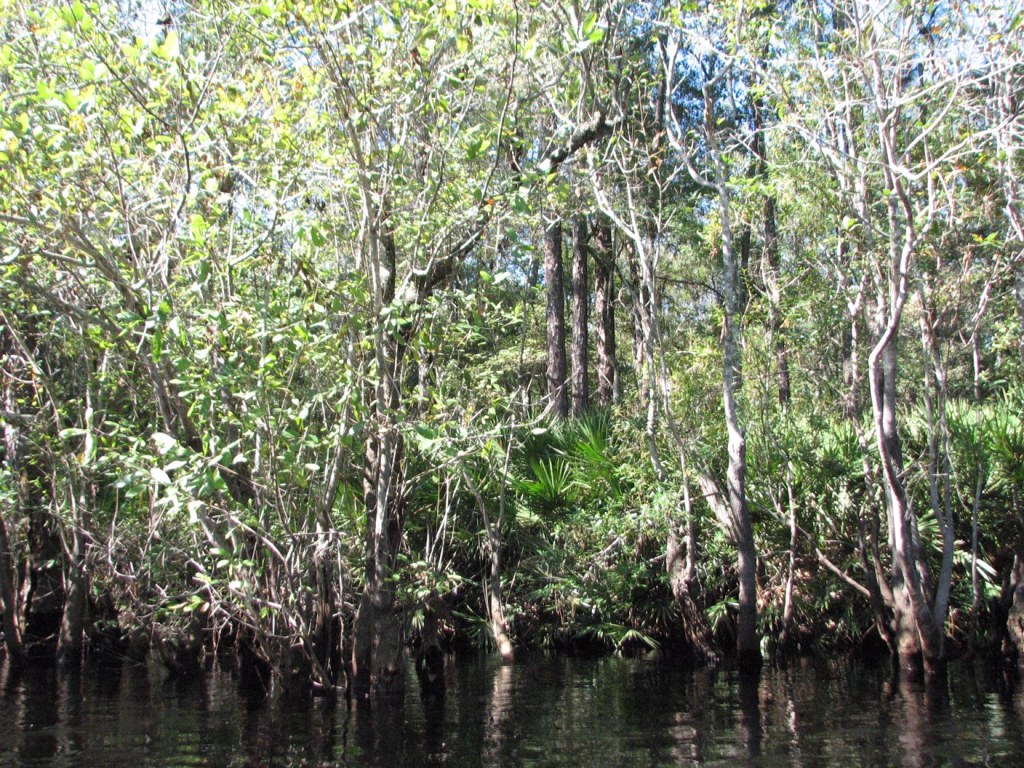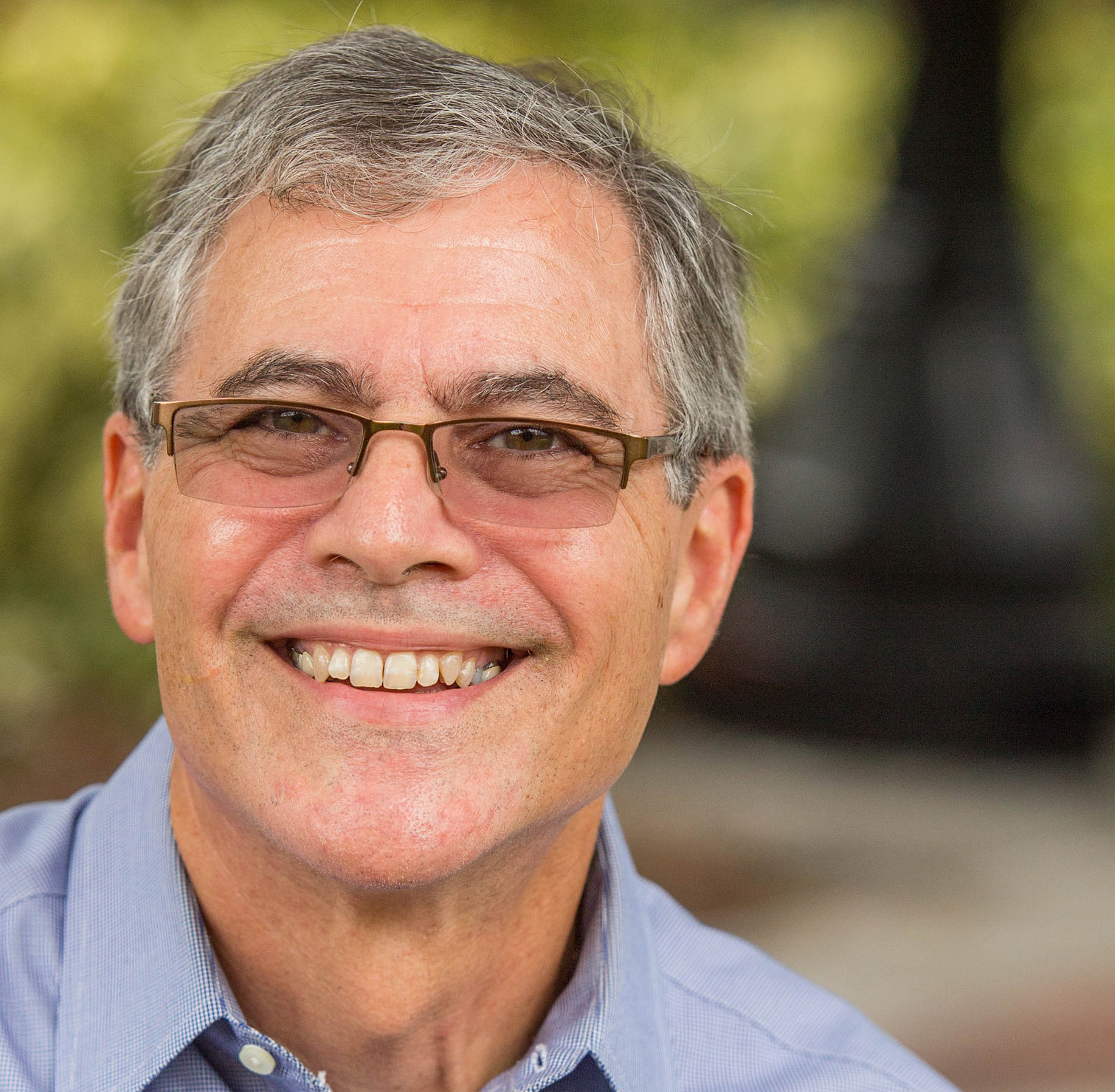
Cheryl Nichols and other Sierra Club members from Polk County paddle the upper reaches of the Suwannee River.
There’s no “Welcome to Florida” sign on the Suwannee River. No message from Gov. Rick Scott saying Florida is “Open for Business.” And that’s probably appropriate. We saw no signs of commerce and few signs of other people last weekend on a 42-mile kayak trip that started at the river’s source at the edge of the Okefenokee Swamp in south Georgia.
I was one of eight people from Polk County who participated on a 2 1/2-day trip organized by the Ancient Islands Sierra Club. Ages ranged from 16 to mid-60s.
The only plentiful signs were ones that said “Posted” or “No Trespassing.” There were few signs to tell us where we were. We knew we had reached Fargo, Ga., at the end of our first day on the river when we passed under the U.S. 441 bridge. We knew we had crossed into Florida the next day only when we saw signs marking a Suwannee River Water Management District erosion control project.
If we really needed to know where we were, I could have checked Google Maps on my phone; the two times I checked it, I had a decent signal. But that seemed contrary to the trip’s ethos of enjoying nature and a respite from the daily hustle-bustle.
That’s not to say we didn’t hustle down the river. We paddled nearly continuously while on the water; my sore shoulders and upper arms will testify to that. The river was somewhat high due to recent rains, so the current was swifter than normal and we made good time. Skies remained clear during our trip with the only significant cloud cover coming at dawn on the final day. Temperatures ranged from the low 50s to maybe 80.
The trip began Saturday morning at Suwannee River Sill, a five-mile earthen dam built in 1960 to hold water in the swamp during times of drought. Although I had been led to believe we’d see plenty of alligators during the first leg of our journey, the only one I spotted was floating on the swamp side of the sill. (A few other people in our group reported seeing a gator or two in the upper reaches of the river.) We saw lots of water birds — egrets, ibis, herons — as well as plentiful turkey vultures, and we heard lots of owls.
For the first few miles, it was hard to tell we had left the swamp. We could see no discernible bank, only a pathway through the cypress and Ogeechee tupelo trees that rise out of the coffee-colored water. Early on, the trees closed in, making it hard to figure out where to paddle. Soon after we picked out the correct route, the trees closed in again, making passage tricky. I became wedged sideways between two trees, the water rushing swiftly toward me. I had to step partly out of the kayak to free myself. Moments after I got going again, I saw the black trashbag that held my sleeping bag floating behind me. I got it back in the boat with the help of trip organizer Dan Clark, who was nearby.
Fortunately, the sleeping bag stayed dry. I can’t say the same for myself. When we stopped for lunch later that day, I didn’t realize how deep the water was where I exited the kayak and I ended up plunging into the water, overturning the kayak and spilling its contents. Most of my stuff was in a drybag, and it held secure. My camera was in a drybox that was about a millimeter too small. Even though the seal seemed tight, there was enough of a gap to let water in. I won’t know if my camera is working until I take it out of its rice bath in a week.
Out of our party of eight, three of us dumped into the water — all while boarding or exiting our boats. Nothing was hurt, other than pride and my camera. Thank goodness for quick-drying synthetic fabrics; that’s all I packed for the trip.
We didn’t find a good camping spot that first day until we had traveled 17 miles and passed the bridge near Fargo, Ga. (We discovered the next morning that the topography had changed and there were plenty of dry camping spots south of U.S. 441.)
An overgrown dirt road led away from our camping spot. I walked down a ways and saw no signs of cars or dwellings, so we decided to stay. Soon after we set up our tents and built a fire, an older-model car came down the road. Uh-oh. The car stopped about 15 yards from the first tent, but turned around in the tight roadway.
We thought the driver was leaving, but the car stopped. The driver got out. He was trimly built, wearing cargo pants, hunting boots and a brown T-shirt with a Fargo, Ga., logo. It was hard to tell his age. His face looked young, but his hair was salt-and-pepper and worn shaggy as if he was starting to sprout dreadlocks.
“You’re good,” he kept saying, to reassure us he wasn’t going to bump us out of the space. He had a hunting lease on the property, he explained, and he’d be walking inland and heading back through around sundown. He unpacked his car and passed us with his rifle. True to his word, he emerged from the woods around sundown. We heard few shots. He carried no prize.
Later we noticed a hunting stand nearby and found a .243 caliber shell. We didn’t know at the time that this was the first day of firearms deer-hunting season in Georgia. That probably explains all the gunfire we heard from the Okefenokee Swamp soon after we departed that morning. It might also explain the loud barking of dogs that woke us up around 2:30 a.m. and continued for more than half an hour. At the time, I thought it sounded like hunting dogs.
Dinner that evening included a tasty broccoli-cheese soup and black beans. The next night was tomato-pea soup, chicken, yellow rice and green beans. (No, I didn’t eat the chicken.) Gourmet meals were prepared on a butane-powered camp stove by expedition leader Clark with assistance from Andy Quinn, an expert in the use of a dehydrator to reduce nutritious meals to lightweight flakes that can be rehydrated and heated at a campsite. A five-day cooler with ice preserved food that needed to stay cool. My favorite meal was Sunday’s breakfast of blueberry whole-wheat pancakes.
We entered Florida sometime Sunday afternoon. Unexpectedly, the river banks rose higher in Florida, often climbing five to 20 feet from water level. We paddled until nearly 5 p.m., passing the Roline Boat Launch before settling on a sandy bluff to camp. Roline was a significant landmark because it had been our original final destination. We had decided before the start of the trip to extend our journey six miles to the County Road 6 bridge. That terminus was suggested by Al Griffis, the owner of Griffis Fish Camp, where we camped the night before hitting the river. Al had agreed to pick us up at the end of our trip and carry those with cars back to the fish camp; he feared recent rains would make the dirt roads to Roline difficult to maneuver. By passing Roline on Sunday, we ensured we could get to our destination before noon on Monday, enabling us to hit the road and get home before dark.
An aside about Al: He wasn’t the kind of person I was expecting to find running a rustic fishing camp in south Georgia. An octogenarian, he had a ready smile, a gentle manner and spoke with precise grammar in a soft, Georgia accent. I found out later he had been principal of the local elementary school and has traveled extensively. The property on the Suwannee River where the fish camp sits has been in Griffis’ family since it was granted to an ancestor in 1852 by the federal government to honor his military service.
Al was waiting us when we arrived at the destination 30 minutes later than we told him we would be there. He didn’t seem to mind the delay. He said he had talked with a fellow who was surveying for a potash company and had listened to — what did he say? It sounded like “hummuncane.” Wondering if the hummuncane might be a local relative of the hummingbird, a member of our group asked for clarification. “I was listening to hummuncane on the radio,” Al said. It was then that I remembered hearing Georgia natives when I was growing up in Atlanta talking about Sen. Hummun Talmadge, or Herman as he was known to Yankees. Al had been listening to Herman Cain on the radio.
When we left the river Monday, I was eager for the warmth of home (and the hot shower there) but sad to depart from the seven others who had bonded together and worked as a team over the previous three days.





 I'm a digital journalist and recovering newspaper guy who lives in Lakeland, Fla.
I'm a digital journalist and recovering newspaper guy who lives in Lakeland, Fla.
Leave a Reply